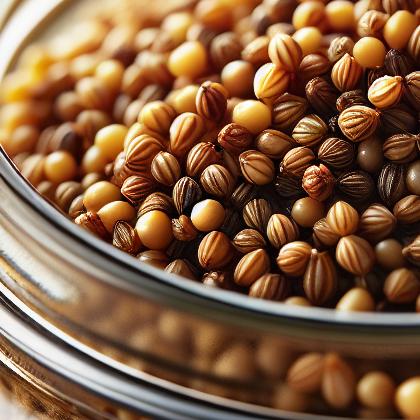Showing results for 'Whole grain mustard'
close
Whole Grain Mustard

Dry mustard is used in food preparation, and can be mixed with water to use as a condiment. In its dry form, powdered mustard lacks potency; the addition of water releases the pungent compounds. The pungency of mustard is always reduced by heating; if added to a dish during cooking, it gives less pungency than if added afterwards.
Whole grain mustard Pairs With:
Food Item
Flavor Affinity Level
Whole grain mustard Properties:
| Food Property | Type | Description |
|---|---|---|
| Texture | Graininess | Whole grain mustard has a grainy texture due to the intact mustard seeds present in the condiment. |
| Nutritional Value | Macronutrients | Whole grain mustard is high in healthy fats, protein, and carbohydrates. |
| Micronutrients | Whole grain mustard is a good source of vitamins and minerals such as vitamin C, iron, and magnesium. | |
| Color | Natural Pigments | Whole grain mustard has a natural yellow color from the mustard seeds. |
| Aroma | Volatile Compounds | Whole grain mustard has a strong, pungent aroma due to the mustard seeds and other spices used in its preparation. |
| Chemical Composition | Acidity/Alkalinity (pH) | Whole grain mustard has a slightly acidic pH level to enhance its flavor and preservation. |
| Cooking Behavior | Heat Conductivity | Whole grain mustard heats up quickly and evenly when used in cooking. |
| Water Retention | Whole grain mustard can help retain moisture in dishes when used as a marinade or sauce. |
Food Pairing App - Version 1.2.0
